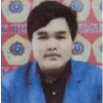International Journal of Information Engineering and Electronic Business (IJIEEB)
IJIEEB Vol. 14, No. 4, 8 Aug. 2022
Cover page and Table of Contents: PDF (size: 585KB)
Development Information System for Rubber Sap Processing in East Borneo
PDF (585KB), PP.21-27
Views: 0 Downloads: 0
Author(s)
Index Terms
Website, Processing, Rubber Sap, East Kalimantan.
Abstract
Information technology is a technology that is growing rapidly today. Technology has a very important role in human life. The impact of the development of information technology is the increasing need for the use of computers. The use of computers in East Borneo (Kalimantan) is also not spared. East Kalimantan is one of the provinces with rubber plantations that have begun to be developed, but unfortunately due to the lack of knowledge and knowledge of the community regarding the management of agricultural products, the sale of rubber latex in East Kalimantan has not developed. Farmers can only sell rubber latex to middlemen at prices below the market. Therefore, the people of East Kalimantan need a forum for promoting agricultural products, so that they can attract buyers from outside the area and can get prices according to the market. To help people in East Kalimantan, in terms of marketing rubber products, a Rubber Sap Processing Website was created. The purpose of this paper is to increase the knowledge of processing and selling rubber products by the farmers while at the same time helping the welfare of the farming community, especially in the East Kalimantan area. The method used is Software Development Life Cycle (SLDC), the result is a website for the introduction and processing of rubber latex in East Kalimantan. The results of this study are the creation of an information system for rubber latex processing that helps farmers sells their harvests in online platform.
Cite This Paper
Haeruddin, Alvian F. Abdulfattah, Ghaly P. Agusva, Adhie C. Sari Firdani, "Development Information System for Rubber Sap Processing in East Borneo", International Journal of Information Engineering and Electronic Business(IJIEEB), Vol.14, No.4, pp. 21-27, 2022. DOI:10.5815/ijieeb.2022.04.03
Reference
[1]L. Valentini and M. Angel Lopez Manchado, “High-Performance Elastomeric Materials Reinforced by Nano-Carbons: Multifunctional Properties and Industrial Applications,” 2020.
[2]M. Alexander, “applications of cardanol in rubber processing,” 2008.
[3]Y. Lin et al., “Water-use efficiency and its relationship with environmental and biological factors in a rubber plantation,” 2018. [Online]. Available: http://www.elsevier.com/open-access/userlicense/1.0/2
[4]S. Buaphuean et al., “Advisory Board Universitas Tamansiswa Palembang, Indonesia,” 2018.
[5]T. Kombusadee and J. Kurukodt, “Development of a Training Manual for Reducing Use of Pesticides by Para Rubber Farmers at Bueng Khan Province, Thailand,” Journal of Education and Learning, vol. 10, no. 3, p. 48, Apr. 2021, doi: 10.5539/jel.v10n3p48.
[6]“Comparative Study of Large-scale Investment in Plantation in Least Developed Countries Applying the Investment Profitability Analysis model.”
[7]Wickham, H. A. (2014). Rough Notes of a Journey through the Wilderness, from Trinidad to Pará, Brazil. Cambridge University Press.
[8]P. A. Okuneye, A. B. Aromolaran, M. T. Adetunji, T. A. Arowolo, K. Adebayo, and I. A. Ayinde, “Environmental impacts of cocoa and rubber cultivation in Nigeria,” 2003.
[9]I. Satra Nugraha, ; Aprizal, and A.?; Sahuri, “Effort to increase rubber farmers’ income when rubber low prices.”
[10]S. Manohar Das, “Toxicity of rubber wood processing effluent exposed to fresh water fish Poecilia reticulata,” 2014. [Online]. Available: www.entomoljournal.com
[11]A. Wibowo, M. Mustangin, A. Safi’I, and D. I. Pratiwi, “A Rapid Dry Rubber Content Measurement Device Based on Photoelectric Sensors,” in IOP Conference Series: Earth and Environmental Science, Mar. 2021, vol. 662, no. 1. doi: 10.1088/1755-1315/662/1/012028.
[12]E. Simanjuntak, “Akta Agrosia The Effect of Local Organic Fertilizer from Rubber Processing Waste on the Yield of Rubber Plants,” vol. 21, no. 1, pp. 25–28, 2018.
[13]Tamrin, S. Leny, and Eddiyanto, “Preparation and characterization of liquid natural rubber through oxidative degradation with phenyl hydrazine and benzoyl peroxide-oxygen,” IOP Conference Series: Earth and Environmental Science, vol. 912, no. 1, p. 012098, Nov. 2021, doi: 10.1088/1755-1315/912/1/012098.
[14]E. Abraham, B. M. Cherian, E. P. A, L. A. Pothen, and S. Thomas, Editors: A. Fainleib and O.Grigoryeva 2. Recent advances in the recycling of rubber waste, vol. 37, no. 2. 2011.
[15]Suyanto and J. Munte, “Implementation of sobel method to detect the seed rubber plant leaves,” in Journal of Physics: Conference Series, Apr. 2018, vol. 983, no. 1. doi: 10.1088/1742-6596/983/1/012128.
[16]N. Parlinah et al., “Valuation of rubber farming business in support of food security: a case study in Pulang Pisau Regency,” IOP Conference Series: Earth and Environmental Science, vol. 917, no. 1, p. 012030, Nov. 2021, doi: 10.1088/1755-1315/917/1/012030.
[17]S. B. Akinfenwa et al., “investigation of the use of cowpea chaff as an additive for natural rubber.”
[18]Y. Ludang, “Potential Development of Sheet Rubber as an Economic Commodity in Central Kalimantan,” International Journal of Management (IJM), vol. 11, no. 4, pp. 62–67, 2020, [Online]. Available: http://www.iaeme.com/IJM/index.asp62http://www.iaeme.com/ijm/issues.asp?JType=IJM&VType=11&IType=4JournalImpactFactor
[19]S. M. Khan, A. Chughtai, A. Sattar, M. A. Butt, and T. Jamil, “synthesis, characterization, and properties of rubber latices; a review,” 2019.



